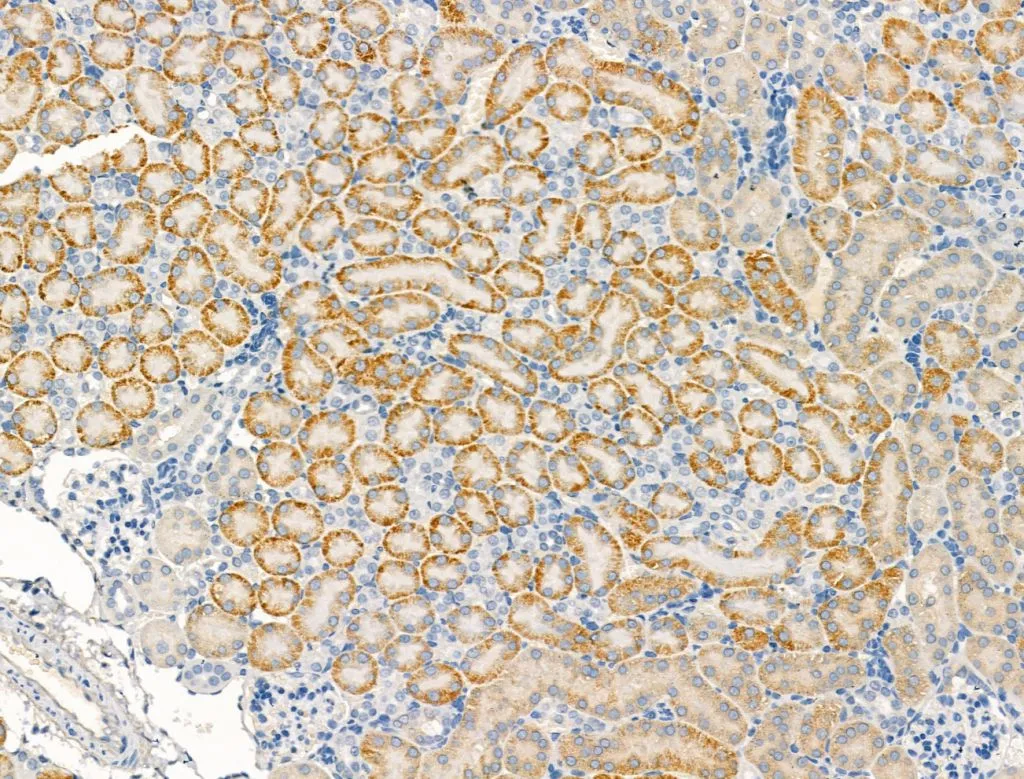
WB analysis of rat brain membrane lysate using GTX16653 Trek1 antibody preincubated with or without immunogen peptide. Dilution : 1:200
Trek1 antibody
GTX16653
ApplicationsImmunoFluorescence, Western Blot, ImmunoCytoChemistry, ImmunoHistoChemistry
Product group Antibodies
TargetKCNK2
Overview
- SupplierGeneTex
- Product NameTrek1 antibody
- Delivery Days Customer7
- ApplicationsImmunoFluorescence, Western Blot, ImmunoCytoChemistry, ImmunoHistoChemistry
- CertificationResearch Use Only
- ClonalityPolyclonal
- Concentration0.8 mg/ml
- ConjugateUnconjugated
- Gene ID3776
- Target nameKCNK2
- Target descriptionpotassium two pore domain channel subfamily K member 2
- Target synonymshTREK-1c; hTREK-1e; K2p2.1; K2P2.1 potassium channel; outward rectifying potassium channel protein TREK-1; potassium channel subfamily K member 2; potassium channel subfamily k member 2 variant 1; potassium channel subfamily k member 2 variant 2; potassium channel, two pore domain subfamily K, member 2; potassium inwardly-rectifying channel, subfamily K, member 2; tandem-pore-domain potassium channel TREK-1; TPKC1; TREK; TREK1; TREK-1; TREK-1 K(+) channel subunit; TWIK-related potassium channel 1; two pore domain potassium channel TREK-1; two pore potassium channel TPKC1; two-pore potassium channel 1
- HostRabbit
- IsotypeIgG
- Protein IDO95069
- Protein NamePotassium channel subfamily K member 2
- Scientific DescriptionThis gene encodes one of the members of the two-pore-domain background potassium channel protein family. This type of potassium channel is formed by two homodimers that create a channel that leaks potassium out of the cell to control resting membrane potential. The channel can be opened, however, by certain anesthetics, membrane stretching, intracellular acidosis, and heat. Three transcript variants encoding different isoforms have been found for this gene. [provided by RefSeq, Jul 2008]
- Storage Instruction-20°C or -80°C,2°C to 8°C
- UNSPSC12352203


